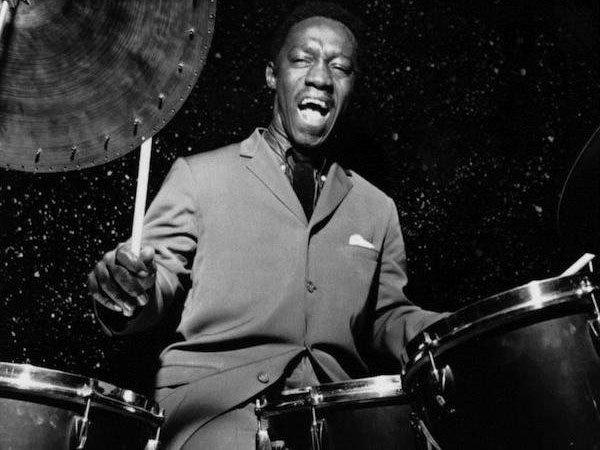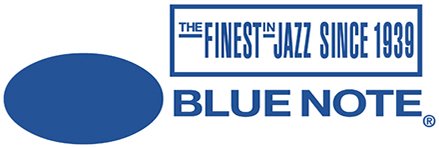The Jazz Messengers: Benny Golson (saxo tenor), Lee Morgan (trompeta), Bobby Timmons (piano), Jymie Merritt (contrabajo) y Art Blakey (batería). Extraído del álbum Moanin’ (1959).
Este es un álbum esencial en el estilo hard bop por el impulso que proporciona Art Blakey y su innovadora combinación de gospel y blues con la sofisticada sensibilidad del jazz moderno. En él encontramos virtuosismo, swing y pura emoción, y contiene alguna de la mejor música que Blakey haya grabado en estudio y el tema que le da título está compuesto por el pianista Bobby Timmons. Además, Lee Morgan toca la trompeta de forma limpia y pegadiza, Blakey realiza un gran trabajo en «Drum Thunder Suite» y «Blues March», y en todo momento el grupo interactúa en armonía. Los Jazz Messengers ya habían cambiado sus componentes varias veces y el único que quedaba de los fundadores del grupo era Blakey.
This is an essential album in the hard bop style because Art Blakey’s drive and its innovative blend of gospel and blues with the sophisticated sensibilities of modern jazz. In it we find virtuosity, swing and pure emotion and contains some of the best music Blakey has ever recorded in studio. In addition, Lee Morgan plays the trumpet in a clean and catchy way, Blakey does a great job on “Drum Thunder Suite” and “Blues March,” and the group interacts harmoniously throughout. The Jazz Messengers had already changed its members several times and the only one remaining of the group’s founders was Blakey.

Más tarde, el cantante de vocalese Jon Hendricks escribió una letra para el tema que da título al álbum, compuesto por el pianista Bobby Timmons, y fue grabado por el trío vocal Lambert, Hendricks & Ross. Blakey se distinguía por su forma explosiva de tocar la batería y su poderoso sonido, el uso de la polirritmia, la interacción musical con los solistas y su personalidad. Además, pensaba que el jazz era subestimado en Norteamérica y quería aumentar su audiencia. Como líder daba amplio espacio a sus solistas y los animaba a contribuir con composiciones y arreglos, reuniendo a lo largo de los años varias de las mejores bandas de hard bop de todos los tiempos.
Later, vocalese singer Jon Hendricks wrote lyrics for the album’s title track, composed by the pianist Bobby Timmons, and it was recorded by vocal trio Lambert, Hendricks & Ross. Blakey was noted by his explosive drumming and powerful sound, use of polyrhythms, musical interplay with the soloists and personality. He also felt jazz was underrated in America and wanted to increase its audience. As a leader he gave his soloists plenty of space and encouraged them to contribute compositions and arrangements, assembling over the years several of the best hard bop bands of all time.

El tema es una breve melodía mezclada con el blues en la que Timmons utiliza la técnica de llamada y respuesta con el piano por un lado, y el saxo y la trompeta por el otro. Morgan llega con energía utilizando elementos de blues en su solo, haciendo filigranas con la trompeta y cambiando continuamente su línea melódica. Después entra Golson más calmado, sus frases son continuas y coherentes, pero a medida que avanza el solo se vuelve más turbulento. Luego aparece Timmons con mucho blues en su discurso y arrastrando todas las teclas del piano. A continuación le toca el turno a Merritt, que toca un solo sin sobresaltos y midiendo cada una de las notas, y finalmente llega la reexposición del tema.
The tune is a brief melody mixed with blues in which Timmons uses the call and response technique with piano on one side, and sax and trumpet on the other. Morgan comes in with energy using blues elements in his solo, filigreeing with the trumpet and continually changing his melodic line. Then Golson enters more calmly, his phrases are continuous and coherent, but as he goes along the solo becomes more turbulent. Timmons then appears with a lot of blues in his discourse and dragging all the keys of the piano. Next it’s Merritt’s turn, who plays a smooth solo measuring every single note, and finally comes the re-exposition of the theme.

Translated with the help of DeepL
℗ Blue Note Records


Great Album, Good Choice. Have You heard Art Blakey's you may enjoy. Witch Doctor with Lee Morgan and Wayne Shorter? He has a few others with that great duo such as Roots and Herbs
Roots and Herbs (1961) is a good album, but Moanin’ (1959) and Ugetsu (1963), which are the ones I'm going to introduce here, are the most representative of the Jazz Messengers on those years.
Still I think you'll like Witch Doctor. Some kind of abstract tunes that work well for me.
Ah, ok, I didn't understand. The Witch Doctor (1961) is a good album also, the one published after Roots and Herbs. I didn't pay attention to it before, but now I can see it's got a couple of really nice tracks leaning towards post-bop.
Thank you for pointing that out!
Fantastic album!
Your post has been supported and upvoted from the Classical Music community (Subscribe at peakd) as it appears to be of interest to our community. We also support jazz and folk music posts!
If you enjoy our support of the #classical-music community, please consider a small upvote to help grow the support account!
You can find details about us below.
The classical music community at #classical-music, Peakd and Discord. Follow our community accounts @classical-music and @classical-radio or follow our curation trail (classical-radio) at Hive Vote!